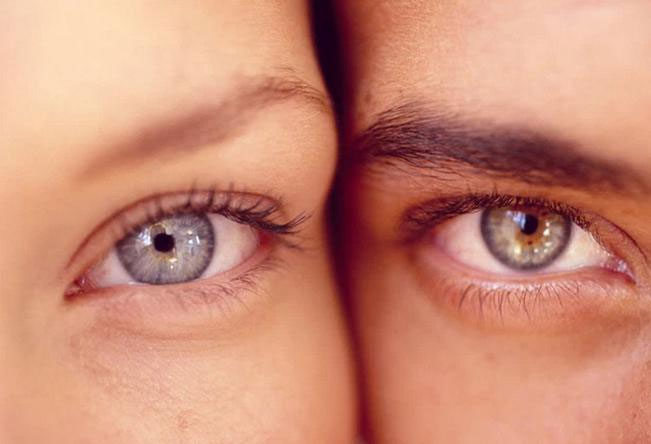You know, everyone has different eye colors that create a unique characteristic on their face. While some people have black eyes, others may have blue, green, or brown eyes. The part that contains the color of your eyes is called the iris, and here are some things you should know about your eye color.
How to Determine Eye Color
We used to believe that it was possible to predict a child’s eye color by looking at the eyes of their parents and grandparents. Additionally, from a scientific perspective, brown eyes are a dominant trait while blue eyes are recessive, which means you can have a good idea of what eye color your child will have based on their parents’ eye colors.
However, modern science has shown that an individual’s eye color is influenced by multiple genes rather than a single gene. While genetic factors still play a significant role, a child’s eye color is not solely determined by their parents’ eye colors.
Eye color is the result of the amount and distribution of melanin pigment in your iris. Brown eyes have more melanin than blue eyes. Darker eyes tend to be more dominant; for example, if both parents have brown eyes, their child is more likely to have brown eyes as well. However, due to various genes at play, this is not always the case. For instance, if one parent has brown eyes and the other has blue, the child does not necessarily have to have brown eyes.

An individual’s eye color is influenced by multiple genes.
According to studies, about half of the population in the United States has brown eyes, and brown eye color is also common in warmer climate regions around the world. On the other hand, people with blue eyes typically lack pigment in the stroma, the front layer of the iris. The absence of pigment in the eyes causes them to appear blue due to light scattering.
People with green eyes are very rare, making up about 2% of the world’s population. This eye color results from both the distribution of pigment and the effect of light scattering.
Individuals with congenital albinism often have very little or no melanin pigment in their bodies, leading to light blue eyes, and in rare cases, pink or red eyes.
Can Human Eye Color Change Over Time?
Human eye color can change from birth; for instance, a child born with blue eyes may later change color as melanin develops in the stroma. From about one year of age onward, a child’s eye color is likely to remain stable into adulthood.
Instances of eye color changing are quite rare and may occur when your pupils dilate or constrict, but this is due to the combination or dispersion of pigments in the iris. During puberty, pregnancy, or late in life, eye color may darken.
Health Issues That Can Affect Eye Color
Health issues can also affect your eye color, such as:
Eye Injuries: Damage to the iris can gradually change eye color.
Neurofibromatosis is a genetic disorder of the nervous system that causes small tumors to grow on nerve cells, including small nodules in the iris. These tumors are usually harmless and do not affect vision, but they can alter your eye color.
Uveitis is a medical term for a group of inflammatory diseases that cause swelling in the eyes, which can affect vision and, in severe cases, lead to blindness. It can also result in changes to the normal color of the eyes.
Fuchs’ Heterochromic Iridocyclitis (FHI) is a form of chronic uveitis that leads to iris atrophy, cataracts, and eye inflammation. Another consequence is the loss of pigment in the eyes, which can change the color of one eye, creating heterochromia or different colors in the two eyes.
Horner’s Syndrome: A relatively rare condition that occurs due to a stroke or spinal cord injury damaging the facial nerve. Symptoms include pupil constriction, drooping eyelids, and sweating disturbances on one side, along with reduced pigment in the iris, causing a change in eye color.
Cataracts: While they do not affect the iris, they can make eye color appear cloudy. This condition is most common in older adults and affects vision. Cataracts can be treated surgically, and studies indicate that people with darker eyes are at a higher risk of developing cataracts compared to others.


















































